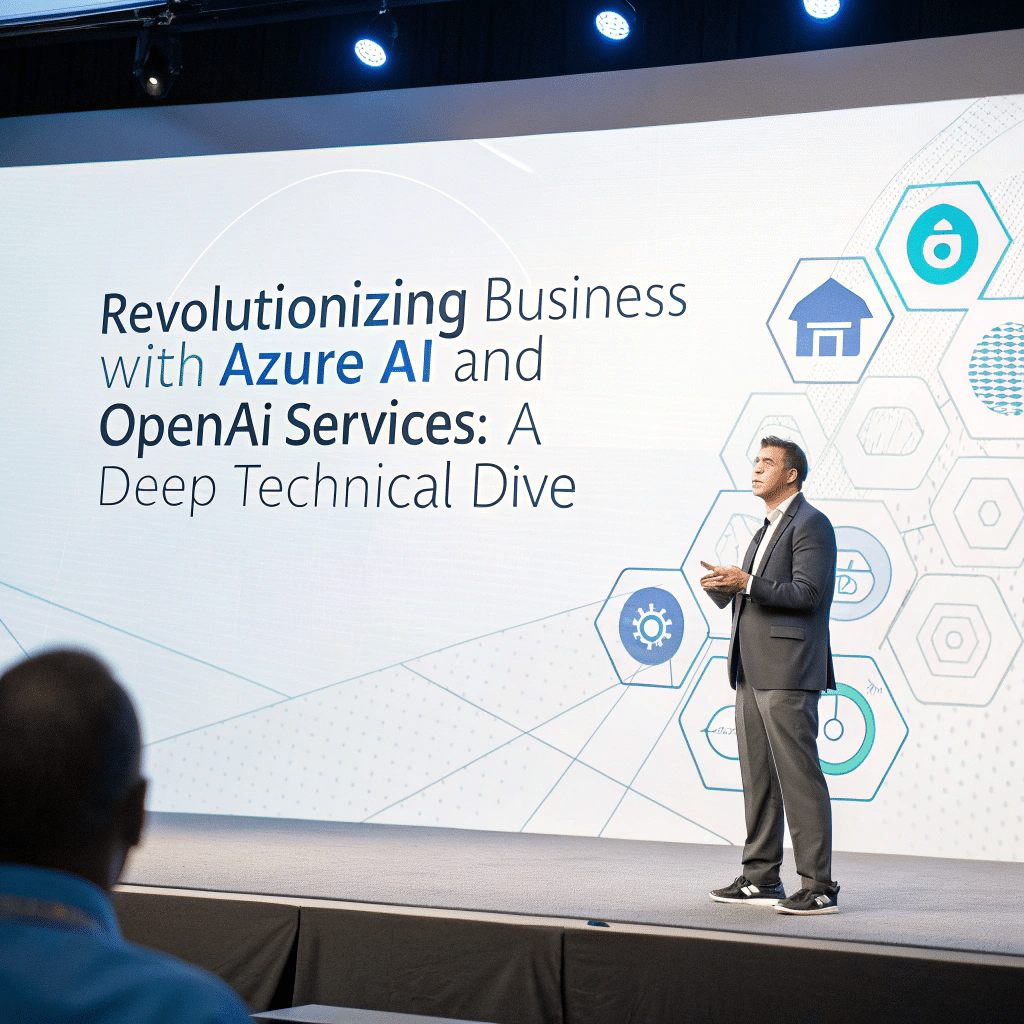Microsoft’s November 2024 showcase of enterprise implementations of Azure AI and OpenAI Services highlights a paradigm shift in leveraging generative AI for actionable insights and operational transformation. A compelling example is Visier, a prominent workforce analytics platform, utilizing Azure OpenAI Services to construct a sophisticated generative AI assistant serving over 50,000 clients. This paper delves into the architectural intricacies, computational strategies, and enterprise-grade methodologies underlying such implementations. The technical discourse elucidates how businesses can replicate and enhance these strategies, thereby achieving transformative operational scalability.
Foundational Elements of Azure AI and OpenAI Services
1. Azure OpenAI Services: High-Performance Model Deployment
Azure OpenAI Services serve as an integration framework for generative models like GPT-4, engineered to embed cutting-edge AI capabilities into robust workflows. Core technological advancements include:
- Dynamic Scalability with Azure Kubernetes Service (AKS): The deployment of containerized models on AKS supports real-time scaling, thereby accommodating computational demands of fluctuating intensity. The microservices-based architecture ensures fault tolerance and load distribution across nodes.
- Custom Model Fine-Tuning: Enterprise-specific datasets enable fine-tuning of generative models, enhancing contextual relevance. Reinforcement learning and domain-adapted training algorithms underpin this customization, aligning outputs with nuanced business objectives.
- Secure Data Integration: Azure’s infrastructure adheres to global security benchmarks such as GDPR and HIPAA, employing private link endpoints and RBAC mechanisms to ensure data confidentiality during model interaction.
2. Advanced Analytical Capabilities with Azure Cognitive Services
Azure Cognitive Services extend analytical dimensions by augmenting text comprehension, sentiment recognition, and anomaly detection capabilities. The multi-modal pipelines integrate generative outputs with analytical insights, achieved through:
- Preprocessing Frameworks: Azure Data Factory orchestrates data normalization workflows, ensuring compatibility across heterogeneous datasets while reducing preprocessing latency.
- Multi-Channel Integration Pipelines: Combining semantic and statistical models amplifies insight precision. For instance, customer behavioral metrics are cross-referenced with real-time feedback loops to deliver predictive analytics.
Architectural Dissection: Visier’s Generative AI Assistant
Visier’s AI assistant exemplifies seamless integration of generative intelligence into workforce analytics, providing strategic recommendations. The following architectural layers detail its technical sophistication:
1. Data-Driven Model Ecosystem
- GPT-4 Integration: At the core, GPT-4 generates linguistically refined insights by leveraging multi-modal embeddings that encode structured workforce attributes and unstructured contextual cues.
- Azure Synapse Analytics: This backbone processes and stores workforce data, leveraging Synapse’s serverless distributed query engine for optimized execution of data-intensive tasks.
- Semantic Query Orchestration: Azure Cognitive Search indexes workforce datasets for semantic querying, enhancing interaction between user inputs and GPT-4’s inferential capabilities.
2. Latency-Optimized Inference Mechanisms
- Distributed Compute Framework: Azure Functions handle real-time inferencing tasks, employing serverless execution models to reduce idle overhead while maintaining rapid response times during peak operational demands.
- Prompt Engineering Dynamics: Domain-specific prompts undergo iterative refinement through adaptive learning mechanisms. Temporal context and behavioral patterns influence the generation of highly relevant insights.
3. Delivery of Actionable Intelligence
- Power BI-Driven Dashboards: Dynamic visualization tools ensure seamless integration of AI-generated insights into user-facing dashboards. Layered data abstraction supports granular exploration.
- Event-Triggered Notifications: Azure Logic Apps automate dissemination of key insights, synchronizing with Teams, email clients, and mobile platforms for multi-channel notification delivery.
Addressing Core Technical Challenges
1. Resource Allocation and Computational Load
- Challenge: High-performance generative models necessitate substantial computational throughput, risking operational bottlenecks.
- Mitigation: AKS’s horizontal scaling and Azure Spot Virtual Machines ensure resource optimization. Autoscaling policies dynamically adapt node capacities to computational intensity.
2. Preserving Data Integrity and Privacy
- Challenge: Handling sensitive enterprise data during AI interaction presents challenges in ensuring compliance and preventing breaches.
- Mitigation: Enforcing RBAC policies and deploying Azure Confidential Computing guarantees data isolation, while encryption-at-rest protects stored datasets.
3. Contextual Optimization of Model Outputs
- Challenge: Generic outputs from foundational models may lack domain specificity, reducing their functional applicability.
- Mitigation: Fine-tuning with proprietary datasets and advanced few-shot learning paradigms ensures domain alignment and contextual precision in generated insights.
Strategic Best Practices for Enterprise AI Deployment
- Microservices-Driven Architecture: Decouple AI functionalities into modular components, allowing independent scalability and enhanced maintainability.
- Fusion of Heterogeneous Data Sources: Integrate unstructured data streams, such as user feedback, with structured transactional datasets to derive composite insights.
- Emphasis on Explainable AI (XAI): Deploy SHAP and LIME frameworks to enhance the interpretability of AI-driven insights, promoting user trust and compliance.
- Model Lifecycle Management: Employ Azure Monitor and MLflow for continuous performance tracking and version control, minimizing model drift risks.
- Optimized Infrastructure Utilization: Combine reserved and spot instances to balance predictable workloads with cost-effective transient tasks, maximizing operational efficiency.
- Skill Augmentation for Stakeholders: Train enterprise teams on AI operational frameworks and ethical deployment practices, ensuring cohesive system adoption.
